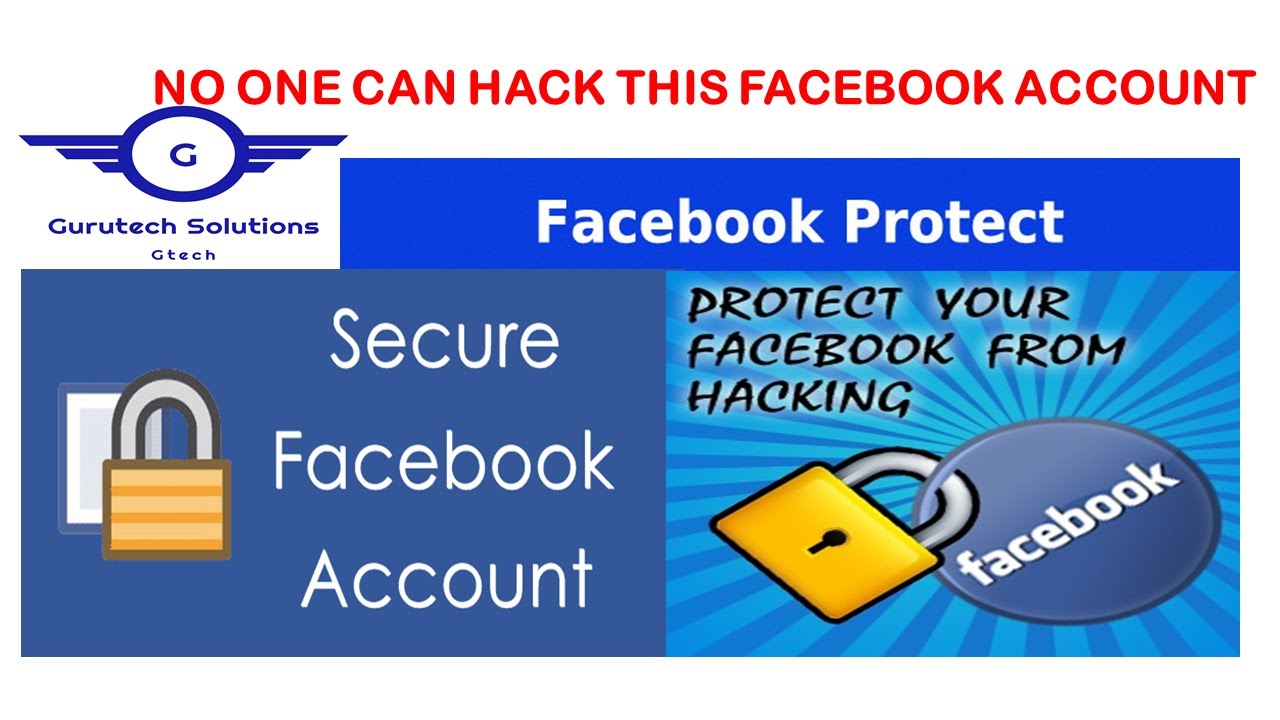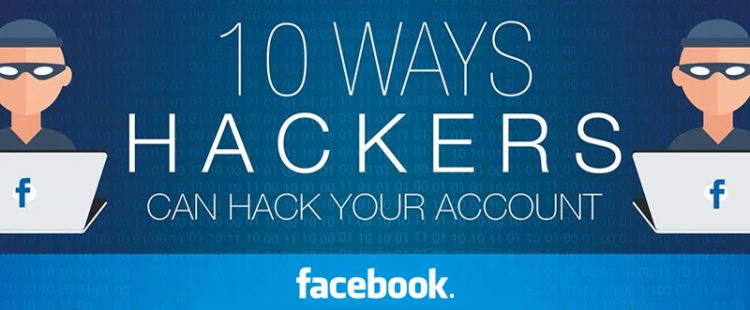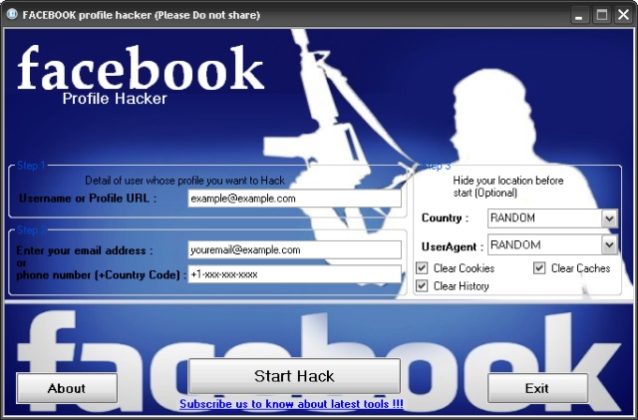In today's digital age, securing your Facebook account is more crucial than ever. With millions of users worldwide, hackers constantly seek ways to exploit vulnerabilities for personal gain. Whether you use Facebook for socializing, business, or community engagement, safeguarding your account is essential to keep your information private and secure. In this guide, we’ll delve into Facebook account security and highlight common risks and threats you should be aware of. Let's get started on protecting your online presence!
Common Risks and Threats to Facebook Accounts

There are several risks and threats that can compromise your Facebook account, and knowing them is the first step to staying safe. Below, I've outlined some of the most common concerns you should be aware of, along with practical tips on how to protect yourself:
- Phishing Scams: Phishing attacks involve tricking you into providing your login information through fake websites or emails. These scams can appear very convincing, often mimicking official Facebook communications.
- Weak Passwords: A weak password is an open invitation to hackers. If your password is easy to guess or commonly used, you're at a higher risk of having your account compromised.
- Malware and Spyware: Installing malicious software on your devices can lead to hackers gaining access to your Facebook account. Malware can steal personal data or even track your keystrokes, making it easier for cybercriminals to capture your login information.
- Unsecured Wi-Fi Networks: Using public Wi-Fi networks can expose your Facebook credentials to anyone else on the network. Hackers can easily intercept data sent over unsecured connections, putting your accounts at risk.
- Third-Party Applications: Many users link third-party apps to their Facebook accounts, which can create vulnerabilities. Some apps may have poor security practices, leaving your data exposed.
Understanding these risks and threats is vital to effectively safeguarding your Facebook account. Take a moment to review your security settings and practices. When you are aware of potential dangers, you can take proactive steps to protect your personal information and maintain a secure online presence.
Also Read This: Exploring the Concept of Hope Through Uplifting Stories on Dailymotion
3. Steps to Strengthen Your Facebook Account Security

In today's fast-paced digital world, ensuring the security of your Facebook account is more crucial than ever. Thankfully, there are several straightforward steps you can take to bolster your account’s defenses. Let’s dive into some essential practices that will help keep your account safe from potential hackers.
1. Choose a Strong Password
- Avoid common words and phrases.
- Incorporate a mix of uppercase and lowercase letters, numbers, and special characters.
- Consider using a memorable passphrase instead of a single word.
- Avoid reusing passwords from other accounts.
When coming up with a password, think of it as the gatekeeper to your online life. Make it as strong and unique as possible. The longer the password, the harder it is to crack.
2. Regularly Update Your Password
Even the strongest passwords can be compromised. It’s important to change your password regularly—every 3 to 6 months is a good rule of thumb. Don’t forget to update it immediately if you suspect it may have been exposed.
3. Enable Login Alerts
Facebook allows you to set up login alerts that notify you whenever your account is accessed from a new device or browser. This feature adds an extra layer of security because you’ll be alerted to any suspicious activity. Go to your security settings and turn it on—it's a small step that can make a big difference.
4. Review Authorized Devices
Periodically check the list of devices authorized to access your Facebook account. If you see any devices that you do not recognize or use, remove them immediately. To do this, head over to the “Security and Login” section of your settings. You can revoke access and keep your account tighter than ever.
5. Be Wary of Phishing Scams
Phishing scams are one of the most common ways hackers gain access. Always double-check URLs before clicking, and avoid clicking on any suspicious links sent via direct messages or emails claiming to be from Facebook. A good rule of thumb is to go directly to the Facebook site rather than clicking through links you’re unsure about.
6. Use Trusted Security Software
Install reputable antivirus software on your devices to help protect against malware and viruses that could compromise your Facebook account. Make sure to keep this software updated for maximum protection.
By taking these steps, you not only strengthen your Facebook account but also create a safer online environment for yourself. Remember, vigilance is key!
Also Read This: Step by Step Guide to Eye Makeup on Dailymotion
4. Understanding Two-Factor Authentication

When it comes to securing online accounts, Two-Factor Authentication (2FA) is like putting a high-tech lock on your digital front door. Let’s break down what this feature is and why it’s important for your Facebook account security.
What is Two-Factor Authentication?
Two-Factor Authentication is an added security layer that requires not just a password and username but also something that only you have on hand. Typically, this is a temporary code sent to your mobile device or email, or obtained through an authenticator app.
Why Use 2FA?
Even if someone manages to steal your password, they won’t have access to the second factor without physical access to your device. This makes it exponentially more difficult for hackers to gain unauthorized access to your account.
How to Enable Two-Factor Authentication on Facebook
- Log in to your Facebook account and go to Settings.
- Navigate to the Security and Login section.
- Find the Two-Factor Authentication option and click on it.
- Follow the prompts to set it up—either via text message or an authentication app, such as Google Authenticator or Authy.
Tips for Using 2FA Effectively
- Choose the Right Method: While SMS codes are convenient, using an authentication app is generally more secure.
- Backup Codes: When you set up 2FA, Facebook provides backup codes. Store these in a safe place in case you lose access to your primary device.
- Keep Your Device Secure: Since your phone will receive the 2FA codes, always use security measures such as a PIN or fingerprint lock.
Implementing Two-Factor Authentication is one of the smartest moves you can make to enhance the security of your Facebook account. It might seem like a hassle at first, but the peace of mind it offers is well worth the effort!
Also Read This: How to Make Cake in Microwave on Dailymotion
5. Recognizing Phishing Scams
Phishing scams are a common method that hackers use to gain access to your personal information, including your Facebook account. These scams typically involve deceptive emails, messages, or even fake websites that appear to be legitimate. Identifying these scams can keep your account secure. Here are some tips to help you recognize phishing attempts:
- Check the sender's email address: Often, phishing emails will come from addresses that look similar to legitimate ones but may have small differences, like an extra letter or a different domain. Always verify the sender's email.
- Look for urgent language: Phishing attempts often create a sense of urgency. You might see phrases like “Immediate action required” or “Your account will be suspended.” Take a step back and think critically before acting.
- Be cautious with links: If an email or message contains a link, hover over it to check the URL before clicking. If it redirects to a site that looks different from Facebook's official domain (like facebook.com), don't click it!
- Personal information requests: Be skeptical of any communications asking for sensitive personal information, like passwords or bank details. Legitimate companies, including Facebook, typically won't ask for such information via email.
- Trust your instincts: If something feels off about a message, trust your gut. It’s better to take a few moments to investigate than to rush into a decision that could compromise your account.
If you suspect that you've encountered a phishing scam, report it immediately. Facebook has mechanisms in place for reporting suspicious messages or emails, and doing so can help protect others in the community.
Also Read This: How to Download Unlisted Videos from Dailymotion
6. Best Practices for Creating Strong Passwords
Creating a strong password is one of the simplest yet most effective ways to protect your Facebook account. It’s all about making it difficult for hackers to guess or crack it. Here are some best practices to keep in mind when crafting your password:
- Make it long and complex: Your password should be at least 12-16 characters long. Use a mix of upper and lowercase letters, numbers, and special symbols. The more varied your characters, the stronger your password will be!
- Avoid common words: Stay away from easily guessable passwords like "password," "123456," or anything related to your name or birthdate. These are among the first things a hacker will try.
- Use passphrases: Consider using a memorable phrase instead of a single word. For example, “MyDogLovesToChaseSquirrels!” is much stronger than “dog123.” This method makes it easier to remember and complex enough to keep hackers at bay.
- Change your password regularly: It's good practice to update your password every few months. If you've noticed any suspicious activity on your account, change it immediately.
- Utilize a password manager: If you're struggling to keep track of multiple complex passwords, a password manager can securely store and generate passwords for you. This way, you only need to remember one master password.
Remember, your password is your first line of defense when it comes to account security. By following these best practices, you can significantly enhance the security of your Facebook account and keep unwanted intruders at bay!
Also Read This: Is Dailymotion Safe from Viruses and How to Stay Secure While Using the Platform
7. Monitoring Your Account for Suspicious Activity
Once you've taken steps to secure your Facebook account, the next vital component of your online safety is monitoring your account for suspicious activity. Just like you’d keep an eye on your home after installing a new security system, you need to stay vigilant online.
Here are some strategies for effectively monitoring your Facebook account:
- Check Login History: Facebook provides you with a comprehensive list of devices that have accessed your account. To find this, navigate to Settings & Privacy, then Settings, and select Security and Login. Look for the section that shows your “Where You're Logged In”. If you see any unfamiliar devices or locations, it’s time to change your password.
- Review Account Activity: Regularly check your activity log to see what posts you've made, comments you've left, and any other actions taken on your account. If something looks off, investigate it right away.
- Enable Login Alerts: Facebook allows you to receive notifications whenever your account is accessed from a new device or browser. Enable these alerts in the Security and Login section. This way, you’ll be instantly informed if someone tries to log into your account from a location you don’t recognize.
- Be Aware of Phishing Attempts: Always be cautious of messages or emails that ask for personal information or direct you to unusual links. If something seems off, trust your instincts and don’t provide any information.
By consistently monitoring your account, you’ll be able to catch any suspicious activity early. Remember, the sooner you react, the less damage a potential hack might cause. Stay proactive and keep your social media environment safe.
Also Read This: How to Download Dailymotion Videos Online: Step-by-Step Tutorial
8. Resources for Recovering Hacked Facebook Accounts
If you ever find yourself in the unfortunate position of having a hacked Facebook account, don’t panic. There are resources and steps available to help you regain control. Here’s a quick guide to navigating the recovery process:
1. *Visit the Facebook Help Center: Start by heading over to the Facebook Help Center. This site is packed with valuable information and can walk you through various recovery methods. You can access it at .facebook.com/help/
2. Use the Account Recovery Tool: Facebook has a specific tool for recovering hacked accounts. It allows you to identify your account and use a method of verification to regain access. You can find it here: facebook.com/hacked.
3. Identify Your Friends: Sometimes, the account recovery process may ask you to identify friends in photos. Make sure you are familiar with your friends’ profiles and have an idea of who you can recognize to aid in recovery.
4. Reset Your Password: If you can still access your email associated with your Facebook account, use the “Forgot Password?” option on the login page. Follow the prompts to send a password reset link to your email.
5. Report the Hack: If you can’t regain access through standard recovery methods, you should report the hack to Facebook. You can do this via the Help Center or the aforementioned recovery page.
6. Notify Friends*: If you believe your account has been compromised, inform your friends not to engage with any unusual messages they receive from your profile. This can help prevent the spread of malware or scams through your account.
Recovering from a hack can be stressful, but the key is to act swiftly and utilize the resources available to you. With diligence and the right tools, you’ll be back on Facebook in no time, enjoying the platform safely and securely.
Conclusion and Final Tips for Account Protection
In conclusion, securing your Facebook account is not just about setting a strong password—it's about adopting a comprehensive approach to online safety. Here are some final tips to enhance your account protection:
- Enable Two-Factor Authentication (2FA): This adds an extra layer of security by requiring not only your password but also a verification code sent to your phone.
- Regularly Review Account Activity: Check your account activity for any unauthorized logins or activity. Facebook provides a feature to view device logins.
- Be Cautious with Third-Party Apps: Only use trusted applications and regularly review the permissions granted to apps linked to your Facebook account.
- Keep Personal Information Private: Adjust your privacy settings to limit who can see your personal information, such as your phone number and email address.
Moreover, remember to stay informed about the latest security issues and phishing tactics. Cyber threats evolve rapidly, so your knowledge should, too.
By implementing these measures, you significantly reduce the risk of your account being compromised. Prioritizing your online security is crucial, and a proactive approach will help keep your Facebook account—and personal information—safe from hackers.
 admin
admin








